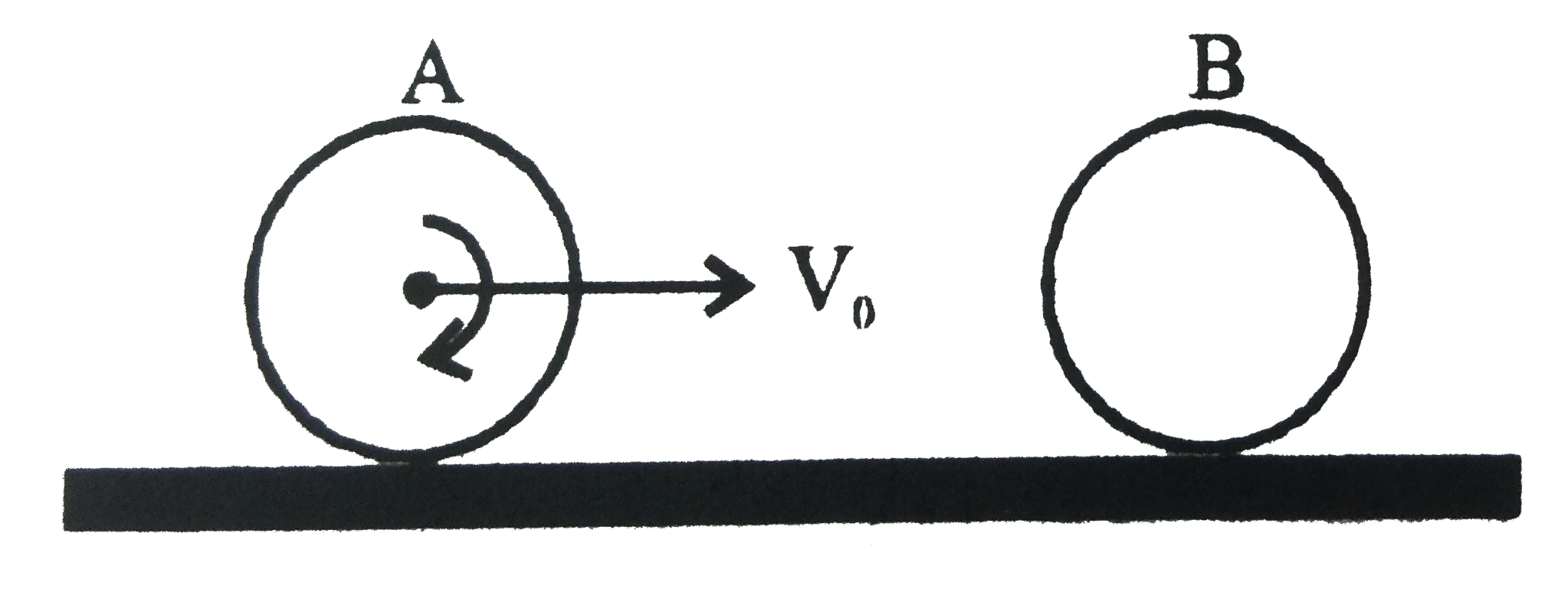A molecule collides with another, stationary, molecule of the same mass. Demonstrate that the angle of divergence
(a) equals 90∘ when the collision is ideally elastic,
(b) differs from 90∘ when the collision is inelastic.
(a) Let a molecule comes with velocity →v1 to strike another stationary molecule and just after collision their velocities become →'v1 and →'v2 respectively. As the mass of the each molecule is same, conservation of linear momentum nad conservation of kinetic energy for the system (both molecules) respectively gives:
→v1=→'v1+→'v2
and v21=v'21+v'22
From the property of vector addition it is obvious from the obtained Eqs. that
→'v1⊥→'v2 or →'v1⋅→'v2=0
(b) Due to the loss of kinetic energy in inelastic collision v21>v'21+v'22
so, →'v1⋅→'v2>0 and therefore angle of divergence <90∘.
Topper's Solved these Questions
- BOOK - IE IRODOV, LA SENA & SS KROTOVCHAPTER - PHYSICAL FUNDAMENTALS OF MECHANICSEXERCISE - Universal Gravitation34videos
PHYSICAL FUNDAMENTALS OF MECHANICS
- BOOK - IE IRODOV, LA SENA & SS KROTOVCHAPTER - PHYSICAL FUNDAMENTALS OF MECHANICSEXERCISE - Dynamics Of A Solid Body56videos
PHYSICAL FUNDAMENTALS OF MECHANICS
- BOOK - IE IRODOV, LA SENA & SS KROTOVCHAPTER - PHYSICAL FUNDAMENTALS OF MECHANICSEXERCISE - The Fundamental Equation Of Dynamics59videos
PHYSICAL FUNDAMENTALS OF MECHANICS
- BOOK - IE IRODOV, LA SENA & SS KROTOVCHAPTER - OSCILLATIONS AND WAVESEXERCISE - Electromagnetic Waves, Radiation36videos
OSCILLATIONS AND WAVES
- BOOK - IE IRODOV, LA SENA & SS KROTOVCHAPTER - THERMODYNAMICS AND MOLECULAR PHYSICSEXERCISE - Transport Phenomena38videos
THERMODYNAMICS AND MOLECULAR PHYSICS
Similar Questions
A particle of mass m strikes another particle of same at rest. Find the angle between velocities of particles after the collision , if the collision is elastic.
View SolutionA truck of mass 1000 kg moving with a speed of 72 km/hr collides with a stationary truck of the same mass . After the collision , the trucks get stick together and move . Calculate their common speed after collision . Is it elastic or ineleastic collision ?
View Solution
Knowledge Check
- Question 1 - Select One
If one sphere collides head - on with another sphere of the same mass at rest inelastically. The ratio of their speeds (v2v1) after collision shall be
A(1−e)(1+e)B2e(1+e)C(1+e)(1−e)De - Question 2 - Select One
A particle of mass m, collides with another stationary particle of mass M. If the particle m stops just after collision, then the coefficient of restitution for collision is equal to
A1BmMCM−mM+mDmM+m - Question 3 - Select One
A molecule of mass 'm' collide with a wall of container in normal direction with a velocity c. if the collision is perfectly elastic, then the change in momentum of the molcules is
AzeroBmcC+2mcD−2mc
A marble going at a speed of 2ms−1 hits another marble of equal mass at rest. If the collision is perfectly elastic, then the velocity of the first marble after collision is
View SolutionA particle (A) of mass m1 elastically collides with another stationary particle (B) of mass m2. Then :
View SolutionA ball moving with a speed of 9m/s strikes an identical ball at rest, such that after the collision, the direction of each ball makes an angle of 30∘ with the original line of motion. Find the speeds of the two balls after collision.
View SolutionOne sphere collides with another sphere of same mass at rest inelastically. If the value of coefficient of restitution is 1/2, the ratio of their speeds after collision shall be-
View SolutionA hollow smooth uniform A of mass 'm' rolls without sliding on a smooth horizontal surface collides head to elastically with another stationary smooth solid sphere B of the same mass m and same radius. The ratio of kinetic energy of 'B' to that of 'A' just after the collision is -
 .View Solution
.View Solution

